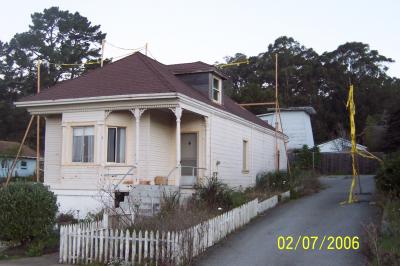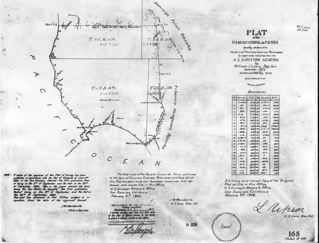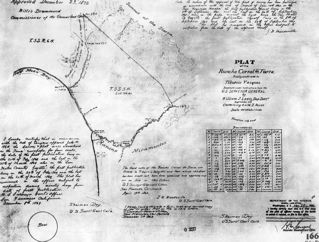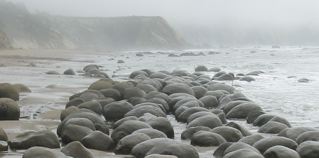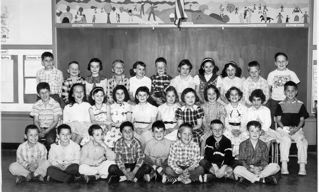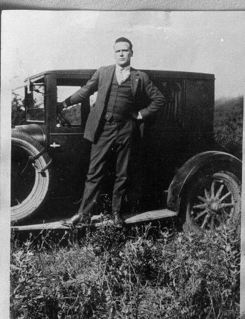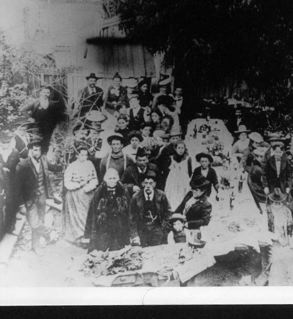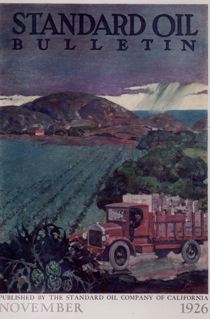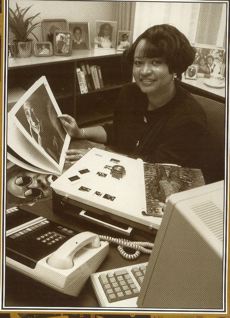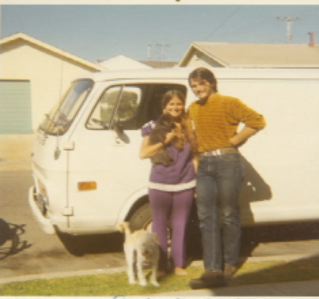 Photo: Poodle, is that a black cat, too?– and Belinda with Fayden. Photo: courtesy Fayden
Photo: Poodle, is that a black cat, too?– and Belinda with Fayden. Photo: courtesy Fayden
Hi June! Just busy fixing, building, being a grandpa, being a dad, being a husband, being a good worker, being being being etc. (Baba Ram Dass would have liked those last three words).
There is this really nice man who just moved to the coast named Charles, who owns Coastside spa repair in Princeton– he is very interested in coastside history (military, mainly, I think). What building did what kinda thing and where.
I told him about the pedestrian overpass in Montara going over to the lighthouse for the enlisted men– from the end of what is now Serra St. in Moss Beach– and about the gun turrets in front of the Distillery– and that most of the horizontal (small lap), lap strake homes on the coast were probably officers homes.
Then I had this great idea, and I suggested he read your articles. I loaned him your book (I really want you to autograph it), and told him perhaps you would know more about the coast in this regard.
This picture is of Belinda Balaski and me the day before I left to go to Europe on tour in 1970– she starred in and acted in a bunch of movies and now runs an acting school in L.A.. Belinda was a local on the coast in the late sixties, worked at the Miramar Beach Inn– although it was called the Spouter Inn for awhile, then the Shelter Inn. Belinda is a great gal! She was one of the rare coastside poodle owners as well.
She always had Muffin, her poodle, with her wherever she was– and apparently has always had one to this day. I like guitars better, I don’t have to feed them, take them for walks, or hold them unless I want to!
Anyway, got back from my European tour…the first morning back I’m walking south on the beach from El Granada, and I see Belinda running in front of the Miramar Inn across the beach. My hopes arise that she and I will pick up where we had romantically departed. She sees me… smiles, comes running up to me, gives me a big hug, and kiss– and in the same moment tells me excitedly she is living with Mike Mindell! My heart was broken…….. well not really, but I was forever jealous of Mike after this moment.
Mike, by the way, was one of the managers from the Spouter Inn days. He and Belinda moved to Manhattan beach where Mike recorded for Kapp records while Belinda launched her acting career. Mike is a great guy too, reminds me of Peter Adams in a way.
So there is a part of coastside history before you moved here, my friend, that was apparently important for me to share with you.
By the way, I fell in love with you the day you brought two plastic dog puppets that operated from squeeze handles into the kitchen by the back door. Do you remember them? You sat across from me at the kitchen table, and did a puppet show with them, you being the voice for both! You won my heart forever!
F

